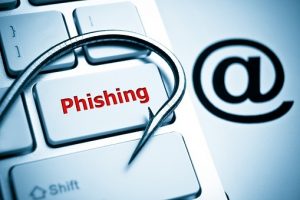 Email has become an indispensable tool for communication. However, with convenience comes a heightened risk of falling victim to phishing email scams. These fraudulent messages are designed to deceive recipients into revealing sensitive information or clicking malicious links. In this blog, we'll delve into the world of phishing scams and equip you with effective strategies to steer clear of potential threats.
Email has become an indispensable tool for communication. However, with convenience comes a heightened risk of falling victim to phishing email scams. These fraudulent messages are designed to deceive recipients into revealing sensitive information or clicking malicious links. In this blog, we'll delve into the world of phishing scams and equip you with effective strategies to steer clear of potential threats.
Understanding Phishing
Phishing attacks typically masquerade as legitimate emails from trusted sources, like banks, social media platforms, or even government agencies. The intention behind these emails is to trick individuals into divulging personal information such as passwords, credit card details, or Social Security numbers. Often, these scams employ cunning tactics such as urgency, fear, or enticing offers to prompt immediate action.
Recognizing Red Flags
- Check the Sender's Address: Scrutinize the email address carefully. Phishers often use subtly altered domain names or free email services. Legitimate organizations typically have official domain names.
- Look for Spelling and Grammar Mistakes: Phishing emails often contain noticeable errors in spelling, grammar, or syntax. Professional organizations maintain a high standard of communication.
- Beware of Urgency or Threats: Phishers often create a sense of urgency, implying dire consequences if you don't act immediately. Take a moment to reflect if the situation truly warrants such urgency.
- Avoid Clicking Suspicious Links: Hover over links to reveal their true destination before clicking. Misleading links often redirect to malicious websites designed to steal your information.
- Don't Download Suspicious Attachments: Opening attachments from unknown or unexpected sources can expose your device to malware. Verify the legitimacy of the sender before downloading anything.
- Verify Requests for Personal Information: Legitimate organizations rarely request sensitive information via email. If in doubt, contact the organization directly using trusted contact details.
- Staying Informed and Vigilant
- Keep Software and Security Tools Updated: Regularly update your operating system, antivirus software, and firewalls. These updates often contain patches for known vulnerabilities.
- Enable Two-Factor Authentication (2FA): 2FA adds an extra layer of security by requiring an additional step (e.g., a text message or app-generated code) to log in. This makes it harder for attackers to gain unauthorized access.
- Educate Yourself and Your Team: Stay informed about the latest phishing techniques and share this knowledge with colleagues, friends, and family. Awareness is one of the most powerful tools in combating scams.
- Report Suspicious Emails: If you receive a phishing email, report it to your email provider and, if applicable, to the organization being impersonated. This helps in identifying and shutting down scams.
- Use a Reputable Email Filter: Employ a reliable email filtering service that can automatically detect and divert suspected phishing emails to your spam folder.
- QR Code Phishing: Scammers often send phishing emailsthat contain QR codes. This technique is known as “quishing.” These emails will pose as a credible company and ask you to scan the QR code in their email. For example, they may say that your payment from an online purchase didn’t go through, and you need to re-enter your credit card information by scanning the QR code. Unsuspecting victims will scan the QR code, enter a legitimate-looking website, and enter their payment information. Now, the cybercriminal has access to their credit card information.
Phishing email scams continue to be a prevalent threat in the digital landscape. By adopting a vigilant approach and following these tips, you can significantly reduce the risk of falling victim to such fraudulent schemes. Remember, taking a moment to verify the legitimacy of an email can save you from a world of trouble. Stay informed, stay cautious, and keep your inbox secure.
Staying 1 step ahead in cyber security can make the difference between staying online, or being total disaster. Partnering with a fully managed IT Solutions provider like Natural Networks can help keep you ahead in the cyber security space. If you’d like to learn more about how Natural Networks can keep you secure, and help with all things IT, give us a call today!



